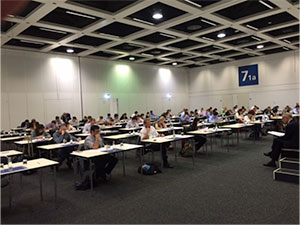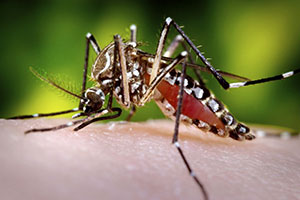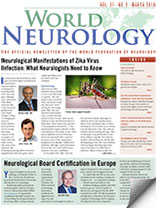By Steven L. Lewis, MD, Editor, and Walter Struhal, MD, Co-Editor

Walter Struhal

Steven L. Lewis
We are pleased and honored to be taking on the editorship of World Neurology, the official newsletter of the World Federation of Neurology (WFN). We would like to thank President Raad Shakir and the officers and trustees of the WFN, as well as the members of WFN’s Publication Committee, for entrusting us with this responsibility. We also wish to give our sincere thanks to Dr. Donald Silberberg for his outstanding editorial leadership of World Neurology for the last three years, as well as for providing the two of us with the benefit and generosity of his ongoing guidance and knowledge as we take on this position, and for having done the work alone that is now deemed necessary for two people to perform.
We have planned a number of new initiatives for the readers of World Neurology, including contributions from authorities on breaking neurological topics that affect neurologist readers worldwide, such as the article in this issue about the Zika virus epidemic from Avi Nath, MD, and James Sejvar, MD. We also plan to develop new sections and columns over the coming issues to cover such entities as global neurological training and many other topics of interest to all neurologists worldwide.
Our plans for World Neurology include offering additional content formats (e.g., video). We will tighten the interconnection with WFN´s online footage and are currently working on implementing social media into World Neurology. This new feature will provide a convenient way to interact with other readers and discuss our articles.
We look forward to continuing to make World Neurology a trusted and sought-after resource for news and information of interest to all neurologists throughout the globe. We are also happy to field any suggestions from readers about ways to continue to make this publication evolve and be as valuable as possible for all neurologists worldwide.



 The validity of the examination needs the input of the scientific experts at the European Academy of Neurology. The reliability of the outcome depends on the number and quality of the participating candidates. A statistical evaluation to eliminate “bad questions” only can be realized in a group of sufficient size. Establishing a passing score can be determined by specialists prior to the test. However, modification of such a score may be necessary after getting data from a sufficient number of adequate participants.
The validity of the examination needs the input of the scientific experts at the European Academy of Neurology. The reliability of the outcome depends on the number and quality of the participating candidates. A statistical evaluation to eliminate “bad questions” only can be realized in a group of sufficient size. Establishing a passing score can be determined by specialists prior to the test. However, modification of such a score may be necessary after getting data from a sufficient number of adequate participants.


